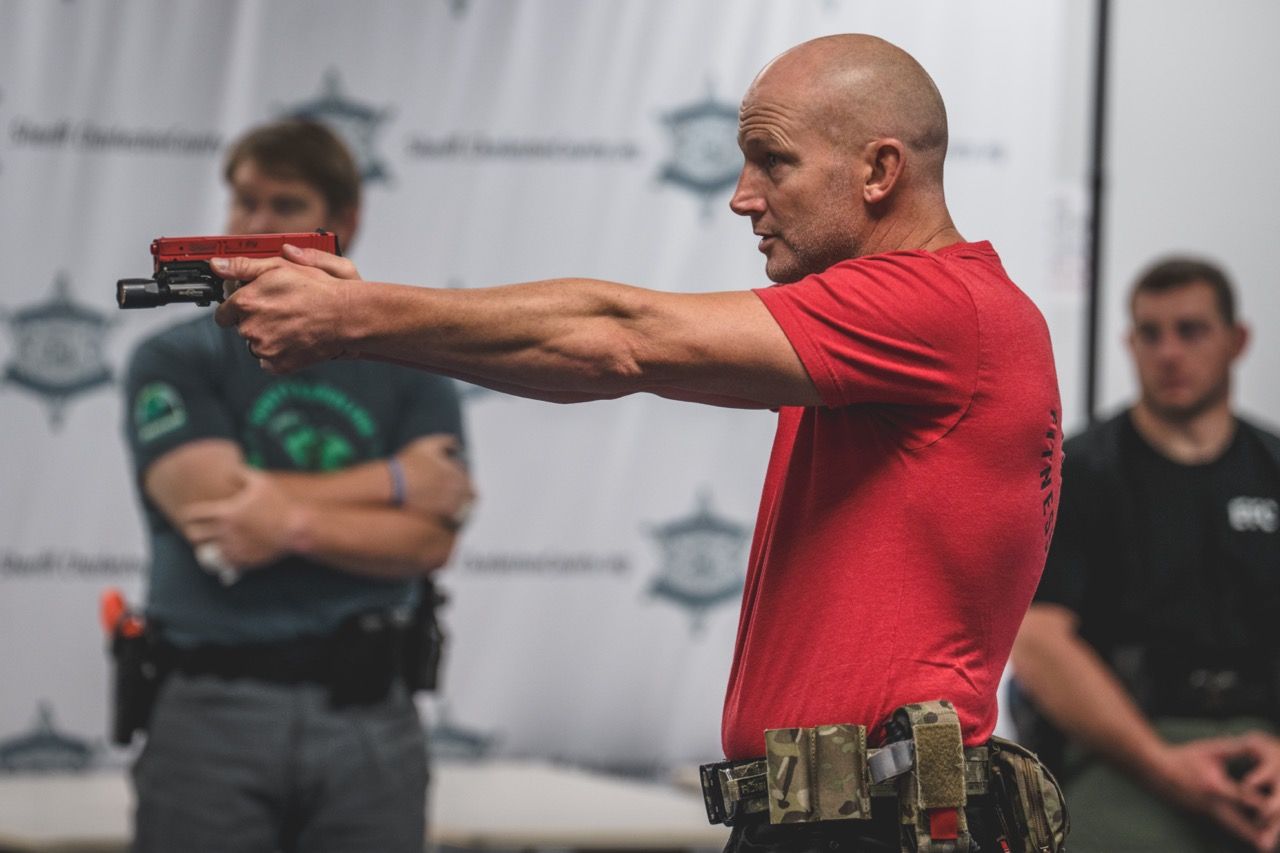In the complex field of law enforcement, officers encounter many challenges that demand a multifaceted skill set. From hands-on control and custody to firearm engagements, the ability to adapt and respond effectively is essential. Law enforcement training needs to bridge the gap between flat-range training and hands-on training.
This is where the concept of integrating range tactics with defensive tactics comes into play. This integration enhances training by equipping officers with a holistic understanding of the practical demands of their work.
This is where the concept of integrating range tactics with defensive tactics comes into play. This integration enhances training by equipping officers with a holistic understanding of the practical demands of their work.

Understanding the 360-Degree Environment:
Unlike traditional firearms training conducted on flat ranges, law enforcement encounters unfold in a 360-degree environment. Whether it's navigating crowded streets, cramped hallways, or confined spaces, officers must be prepared to engage threats from all angles.
By integrating range tactics with defensive tactics, officers gain the critical skills needed to maneuver and respond dynamically in any scenario.
By integrating range tactics with defensive tactics, officers gain the critical skills needed to maneuver and respond dynamically in any scenario.
The Evolution of Threats:
In today's policing, physical confrontations and firearms incidents can transition rapidly between each other. A hands-on problem can quickly become a firearm problem and vice-versa. To effectively handle these evolving threats, law enforcement officers must possess proficiency in both unarmed defensive tactics (DT) and be proficient with their firearm to effectively manage evolving threats.
By combining these disciplines, officers are better equipped to de-escalate situations when possible and escalate force, when necessary, all while maintaining control and ensuring safety for themselves and others.
By combining these disciplines, officers are better equipped to de-escalate situations when possible and escalate force, when necessary, all while maintaining control and ensuring safety for themselves and others.

Creating a Full Spectrum Combatives System:
A full spectrum combatives system recognizes the interconnectedness of range tactics and defensive tactics. It acknowledges that officers must be prepared to transition seamlessly between hand-to-hand combat and firearm engagements, depending on the circumstances.
This holistic approach to training ensures that officers are equipped with the skills and mindset needed to prevail in any encounter.
This holistic approach to training ensures that officers are equipped with the skills and mindset needed to prevail in any encounter.
Mitigating Risk Through Training:
Integrating range tactics with defensive tactics not only enhances officers' capabilities but also mitigates risk in high-stakes situations. By improving their ability to assess threats, stay aware of their surroundings, and make quick decisions, officers can effectively de-escalate volatile situations and minimize the likelihood of resorting to lethal force unnecessarily.
At the same time, if an escalation of force is required due to the suspect’s actions, the officer will be better prepared to engage with the amount of force necessary.
At the same time, if an escalation of force is required due to the suspect’s actions, the officer will be better prepared to engage with the amount of force necessary.

Integrating Weapon Systems with Effective Fitness Combatives (EFC):
At EFC, we recognize that law enforcement officers must be prepared to handle weapon-based encounters effectively. That's why we have developed our Weapons-Based Entanglements module, a crucial component of our training curriculum.
This module goes beyond traditional combatives training by integrating weapon systems into our defensive tactics programs.
Our Weapons-Based Entanglements module includes:
This module goes beyond traditional combatives training by integrating weapon systems into our defensive tactics programs.
Our Weapons-Based Entanglements module includes:
- Weapon Deflection and Movement Out of the Vertical Clinch: Officers learn techniques to deflect a gun grab attempt and disengage from the clinch.
- Weapon Retention: We focus on teaching officers how to retain control of their weapons, in the holster and outside the holster, during physical altercations, reducing the risk of disarming by suspects.
- Weapon Defense (Handgun and Edged Weapon): Officers are trained in defensive techniques specific to handgun and edged weapon threats, ensuring they can effectively neutralize such threats while protecting themselves and others.
-
Weapon-Based Entanglements (CAP Concept): We introduce officers to the CAP (Control, Angle, Present) concept, which emphasizes controlling the nearside arm to the weapon or tool you want to present, establishing a dominant angle, and presenting your firearm or tool.
By integrating weapon systems into our curriculum, we provide officers with the skills and confidence needed to navigate weapon-based encounters safely and effectively.
This full spectrum combatives approach to training reflects our commitment to ensuring the safety and success of law enforcement officers in the field.
This full spectrum combatives approach to training reflects our commitment to ensuring the safety and success of law enforcement officers in the field.

